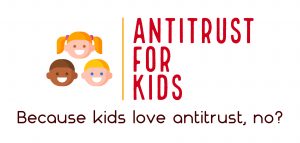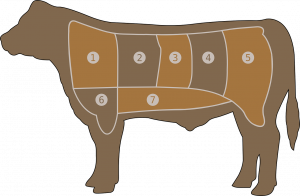Authors: Steven Cernak and Luis Blanquez
Section 8 of the Clayton Act prohibits certain interlocking directorates between competing corporations. But while the prohibition has been around since 1914, most antitrust lawyers pay little attention to it, partly because companies can quickly resolve any issues voluntarily. Recent comments by the new AAG Jonathan Kanter, however, hint that litigation might play a larger role in future Section 8 issues.
Clayton Act, Section 8 Basics
The prohibitions of Section 8, in its most recent form, can be simply stated: No person can simultaneously serve as an officer or director of competing corporations, subject to certain jurisdictional thresholds and de minimis exceptions. Truly understanding the prohibition, however, requires understanding all those italicized terms.
First, Section 8’s prohibition applies only if each corporation has “capital, surplus, and undivided profits,” or net worth, of $10M or more, as adjusted. The FTC is responsible for annually adjusting that threshold for inflation and usually announces the change early in the calendar year along with changes to the Hart-Scott-Rodino thresholds. Currently, the threshold is just over $41M.
Section 8 provides an exception where the competitive sales of either or each of the corporations is de minimis. Specifically, no interlocks are prohibited if the competitive sales of 1) either corporation are less than $1M, as adjusted (currently about $4.1M); 2) either corporation are less than 2% of that corporation’s total sales; or 3) each corporation are less than 4% of that corporation’s total sales.
Originally, Section 8 applied only to directors of corporations; however, the 1990 amendments extended the coverage to officers, defined as those elected or chosen by the corporation’s Board. Despite the clear wording of the statute limiting it to officers and directors, courts have considered the possibility that Section 8 might apply when a corporation’s non-officer employee was to be appointed a director of a competitor corporation.
The language of Section 8 clearly applies to interlocks between competing corporations. An interlock between a corporation and a competing LLC would not be covered by the statutory language or the legislative history of the original statute or amendment. The FTC and DOJ have not explicitly weighed in on application to non-corporations, although the FTC’s implementing regulations for Hart-Scott-Rodino cover LLC explicitly as “non-corporate interests” different from corporations. Still, the spirit of Section 8 would seem to cover any such non-corporate interlock. Also, any corporate director who also serves a similar role for a competing LLC would face an increased risk of violating Sherman Act Section 1.
Section 8 clearly applies if the same natural person sits on the boards of the competing corporations. It might also apply if the same legal entity has the right to appoint a natural person to both Boards, even if that entity appoints two different natural persons to the two Boards. That interpretation is consistent with the Clayton Act’s broad definition of “person” and has been supported by both the FTC and DOJ and the one lower court to consider the question.
As with other parts of the antitrust laws, the question of competition between the two corporations requires some analysis. The few courts to look at the question have found that corporations that could be found to violate Sherman Act Section 1 through an agreement would be considered competitors. On the other hand, these same courts did not define competitors more narrowly to be those corporations that would not be allowed to merge under the more extensive analysis of Clayton Act Section 7.
Kanter’s Speech
On April 4, 2022, at the ABA Antitrust Spring Meeting, Jonathan Kanter, the assistant attorney general in charge of the Antitrust Division at the DOJ, made during his speech some significant remarks about Section 8. First, he highlighted the fact that the Division is committed to litigating cases using the whole legislative toolbox that Congress has given them to promote competition, including Section 8 of the Clayton Act. Second, he reminded everyone that Section 8 helps prevent collusion before it can occur by imposing a bright-line rule against interlocking directorates. Third, that for too long, Section 8 enforcement has essentially been limited to their merger review process. And last but not least, that the Division will start ramping up efforts to identify violations across the broader economy and will not hesitate to bring Section 8 cases to break up interlocking directorates. The former head from the FTC made a similar statement back in 2019, indicating how Section 8 of the Clayton Act protects against potential information sharing and coordination by prohibiting an individual from serving as an officer or director of two competing companies.
 The Antitrust Attorney Blog
The Antitrust Attorney Blog











